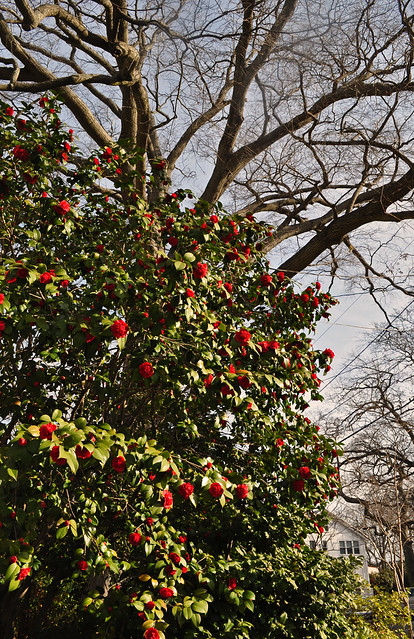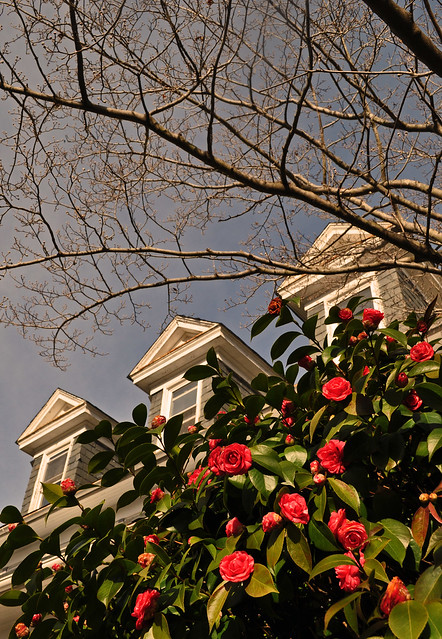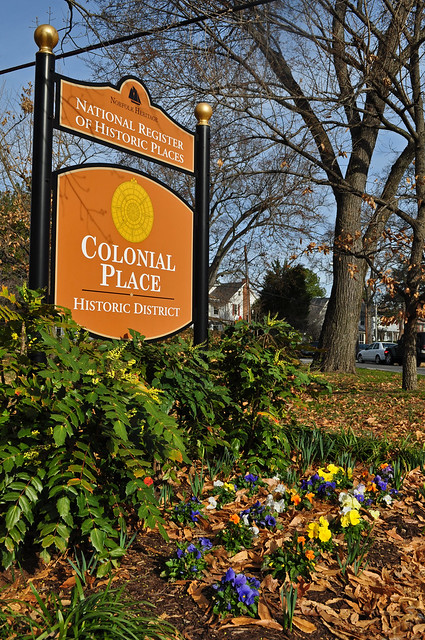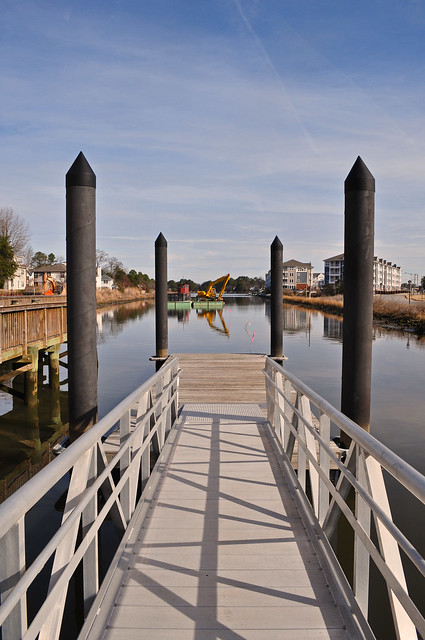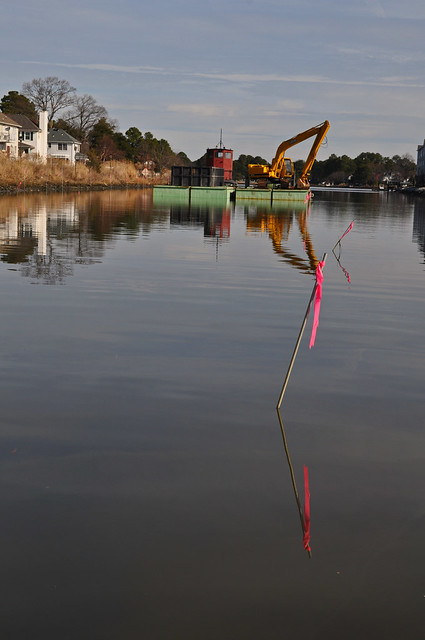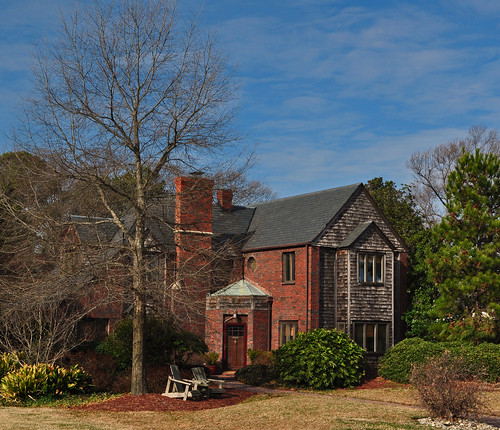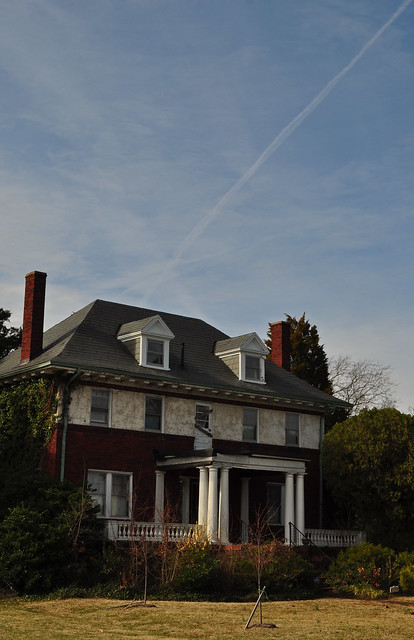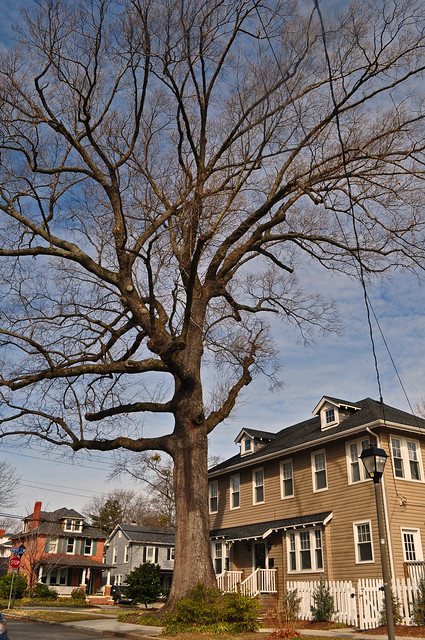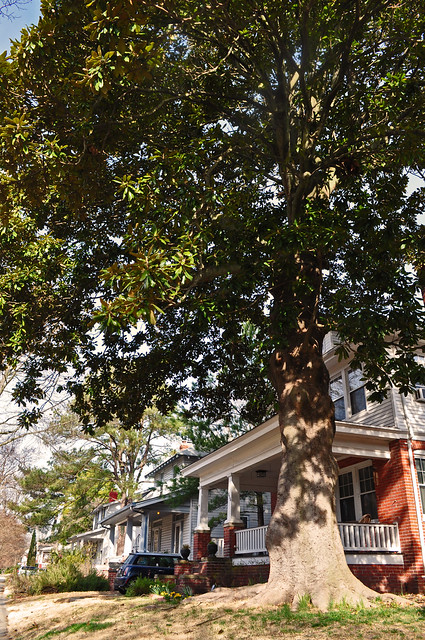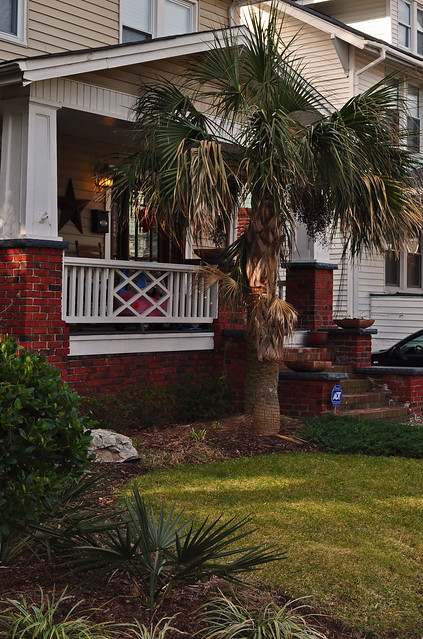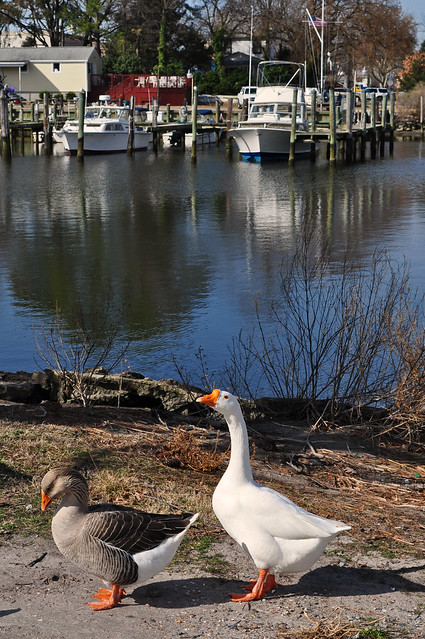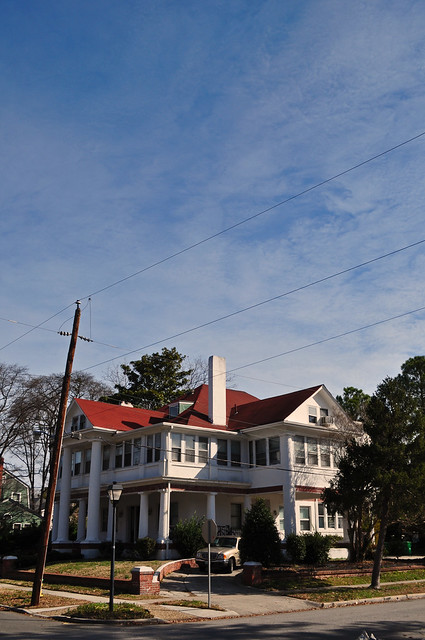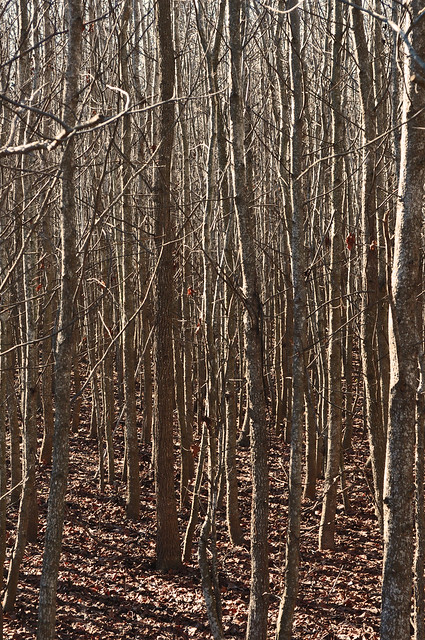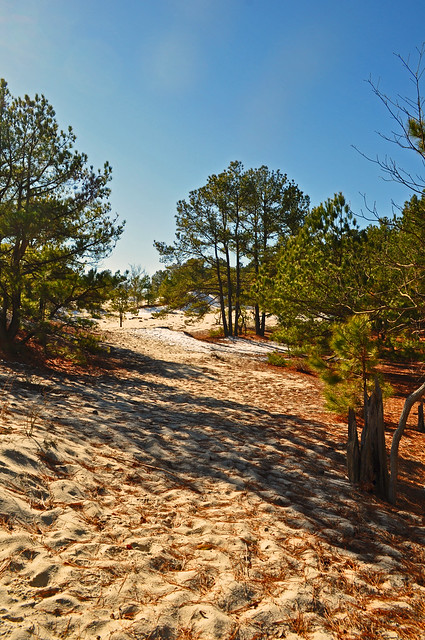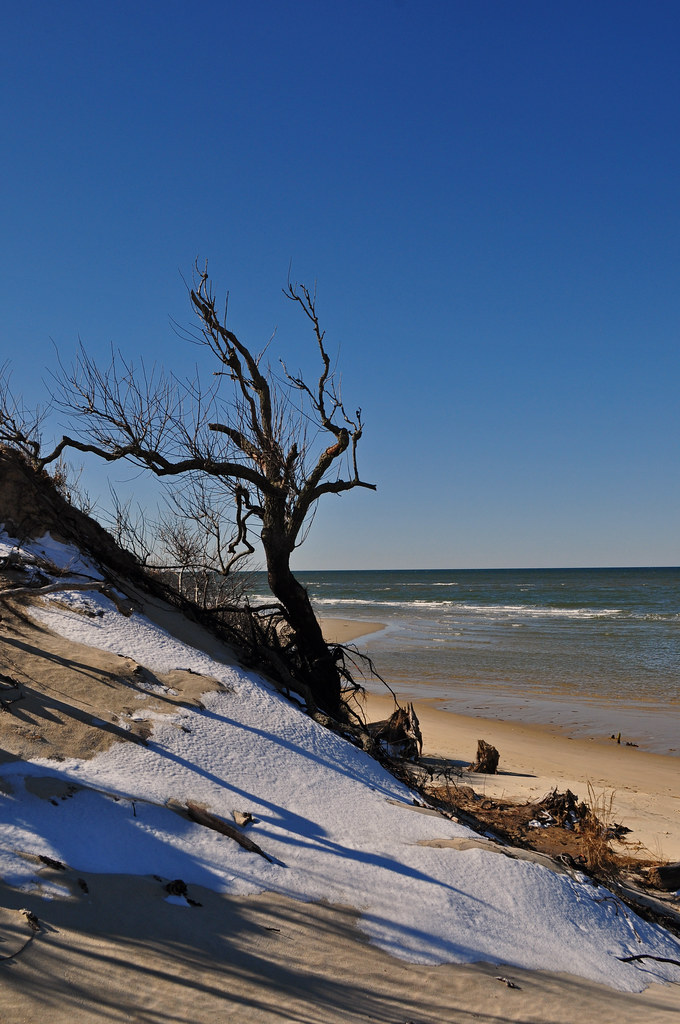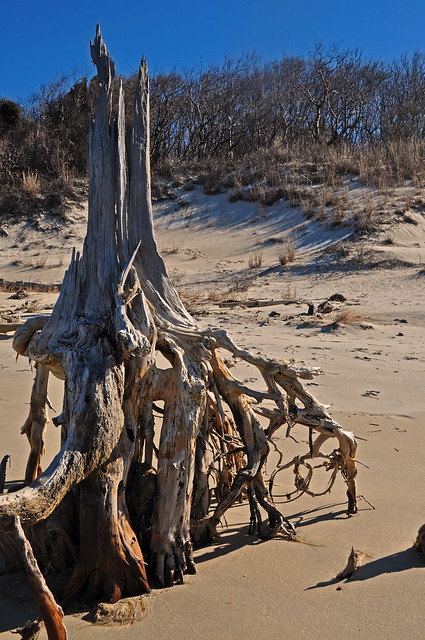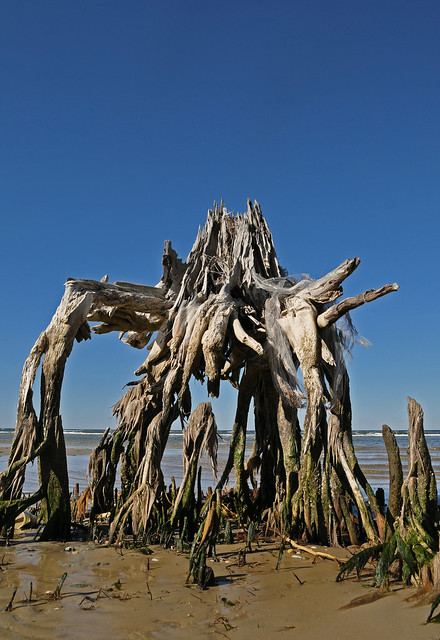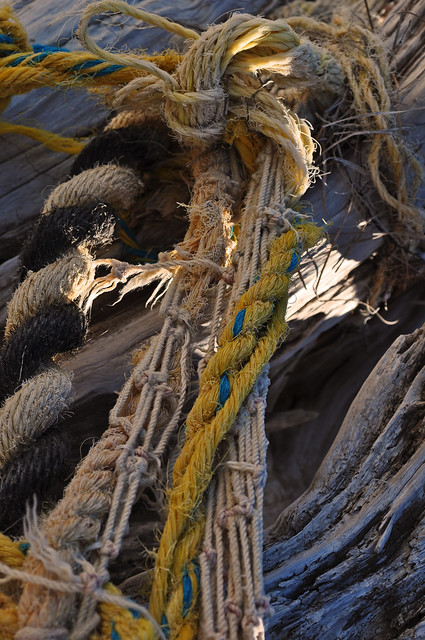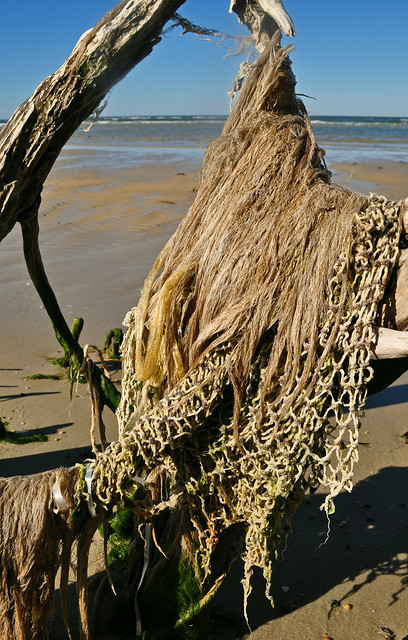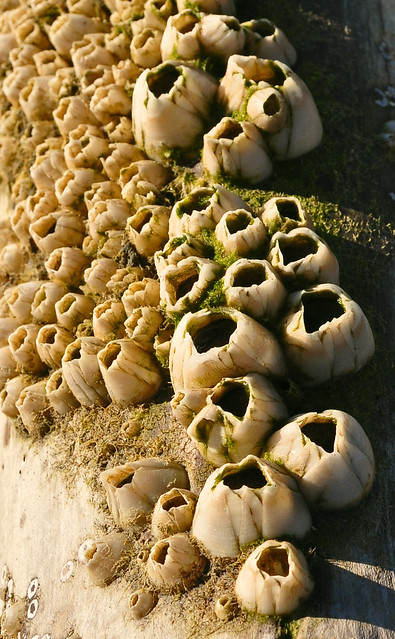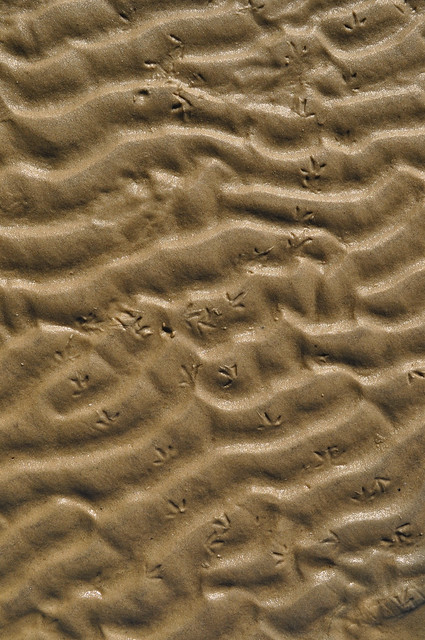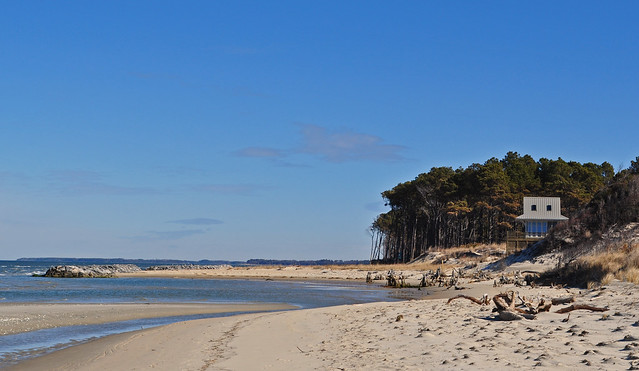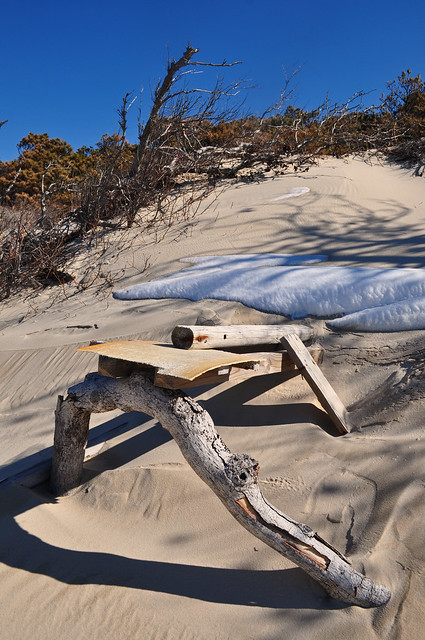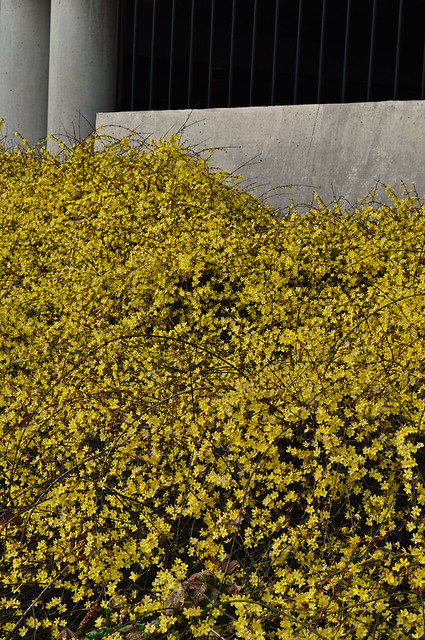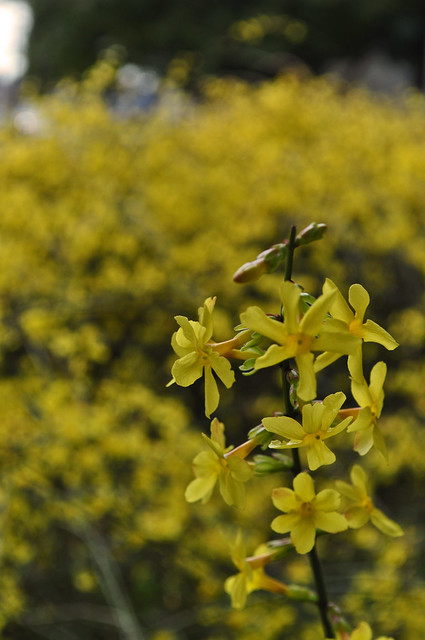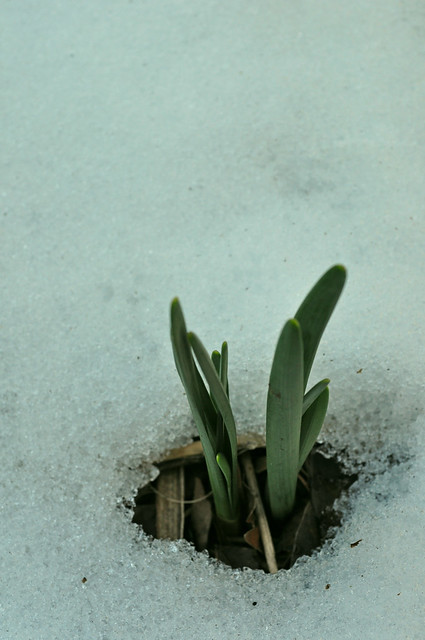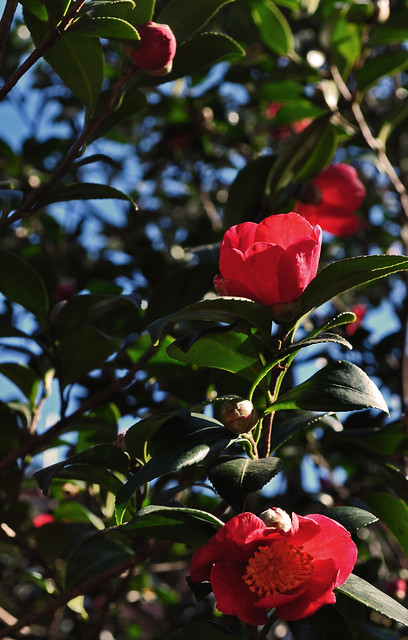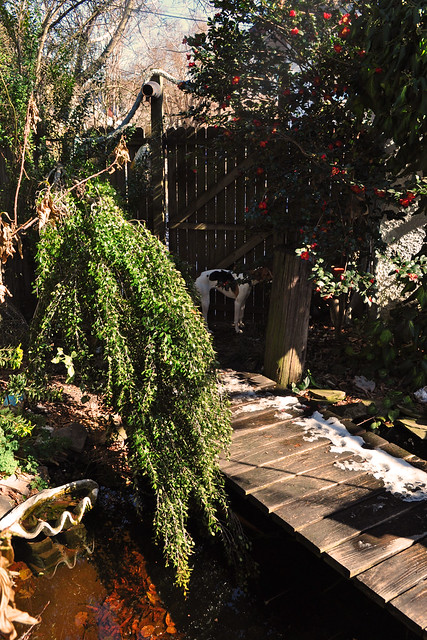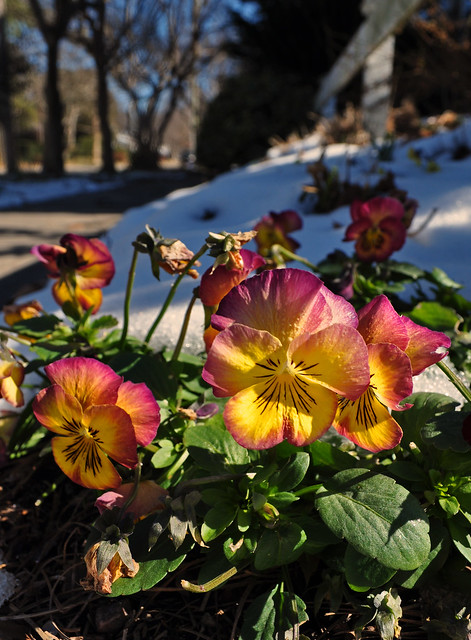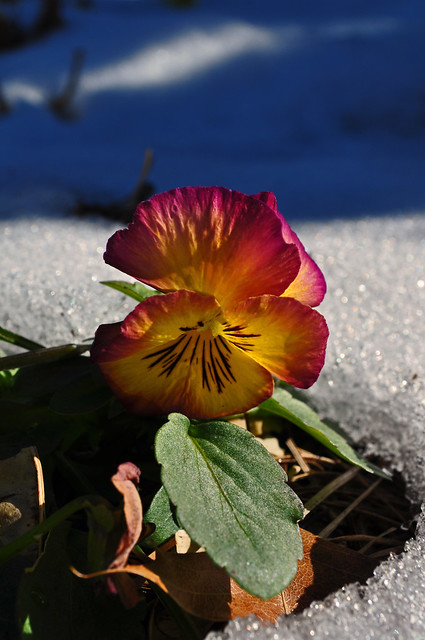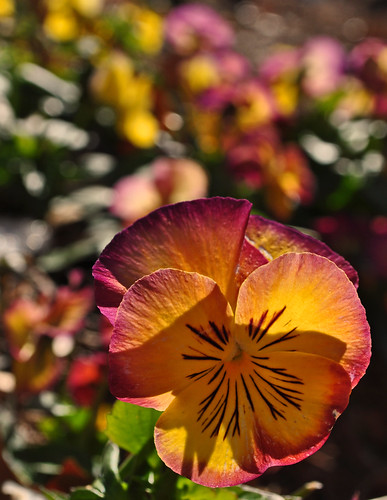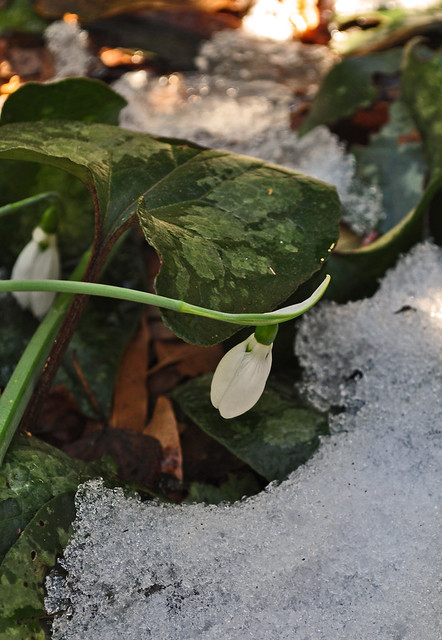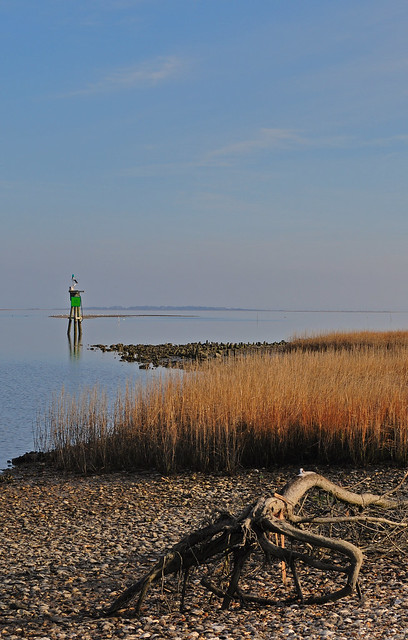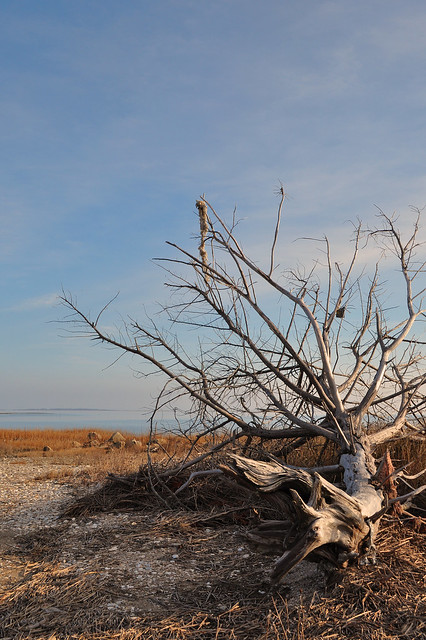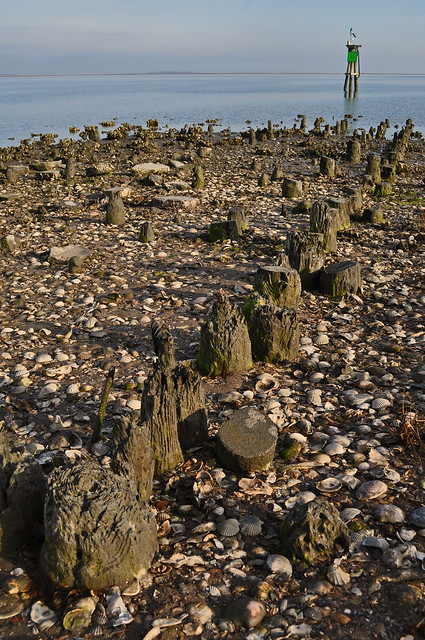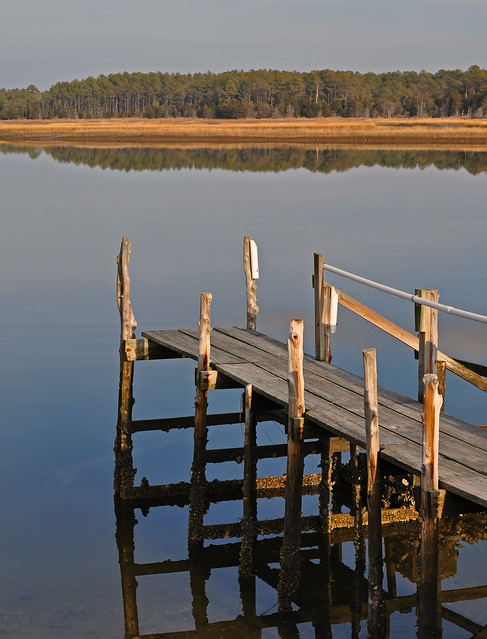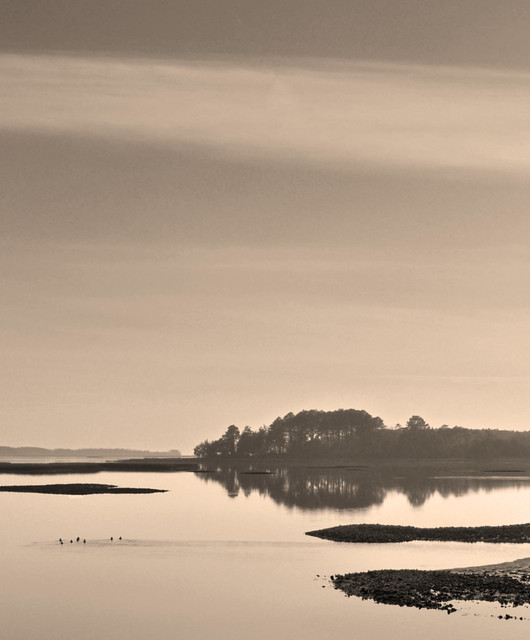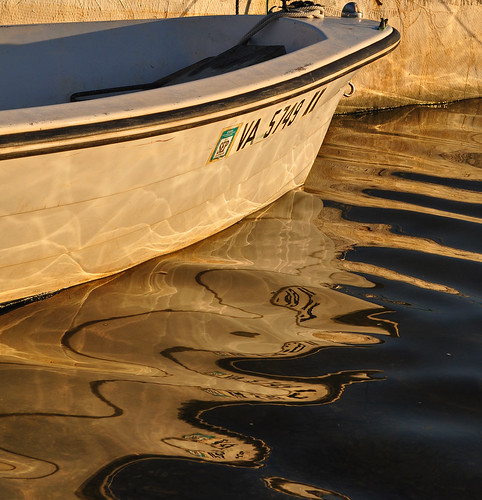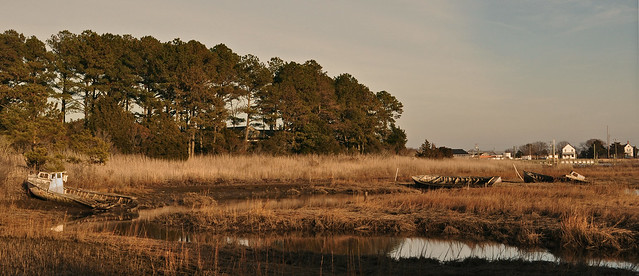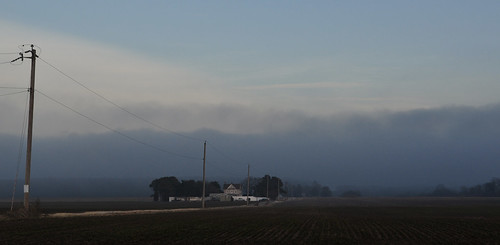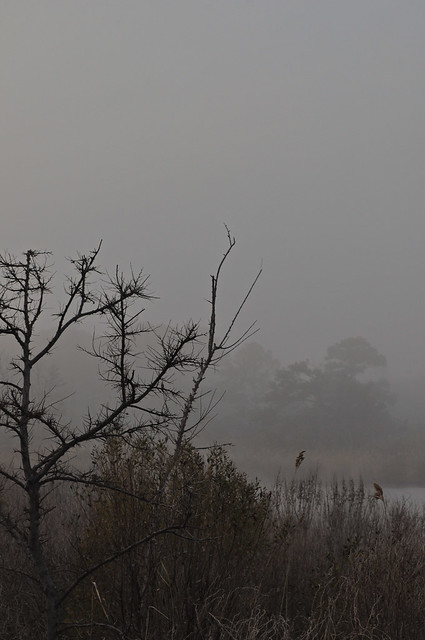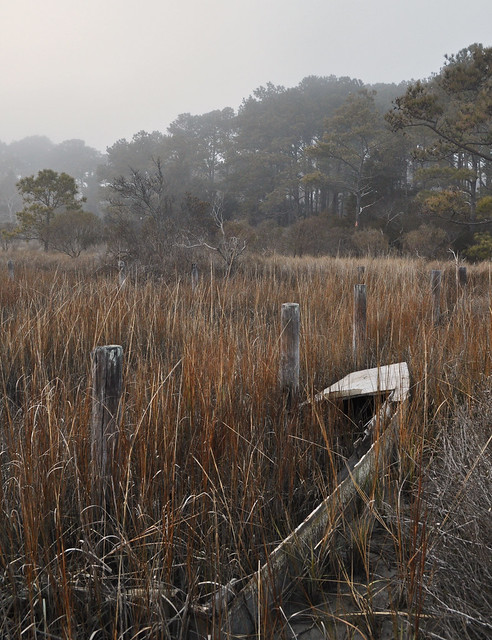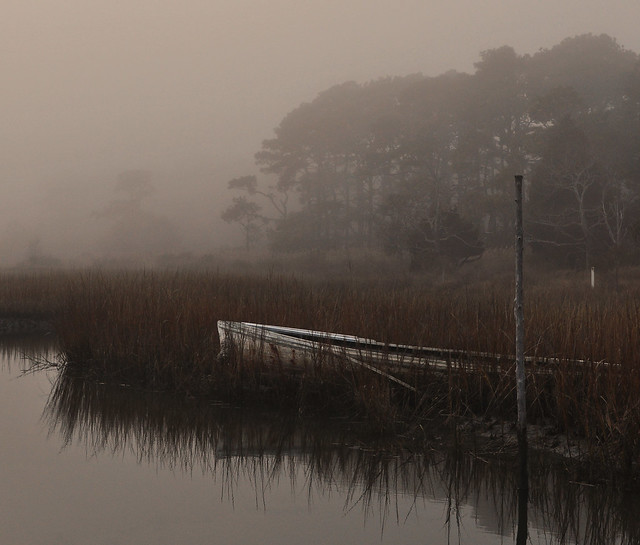- On your own two feet, leave the house and share what can be seen within walking (or biking) distance of your home. Your post does not have to be a picture-heavy travelogue like mine, unless you want it to be. Maybe instead you will find some unusual patterns, interesting shadows, signs of spring, a favorite restaurant or shop, questionable landscaping or local eyesores. Whatever, just keep your eyes and mind open, be creative and have fun, but don't show anything from your own yard.
- Post your own Winter Walk Off on your blog, and link it back to this post. Please also leave me a comment when your post is up. If you have recently written a similar post, you are welcome to use it.
- I will keep the challenge open until March 19th, the last day of winter (or summer for those of you below the equator).
- Everyone who participates will have their name put in a hat for a chance to win one of two prizes, with a totally disinterested teenager randomly drawing the names. One person will win a collection of packaged Dahlia bulbs, and another will win some of my wife's handcrafted note cards. I will contact the two winners and mail the prizes. If the bulb winner lives overseas, they will get note cards instead.
Now here is what I saw yesterday. Right around the corner from my house, I found one of my favorite signs that winter is nearing its end. Camellia japonica seems to have suddenly opened throughout the neighborhood.
This sign is sort of at the entrance to our neighborhood and below it, coming up through the pansies are some Narcissus. I donated these to the neighborhood several years ago when we came into a bulb bonanza at work and could get bags of 200 assorted for only $25. The sign says we are a historic district, which I am guessing is mainly from its age and architecture, and not from any significant events, though John McCain and Leon Uris lived here once, and F. Scott Fitzgerald frequently visited his cousin here.
The dogs couldn't care less about historic districts and were only focused on getting to the dog park.
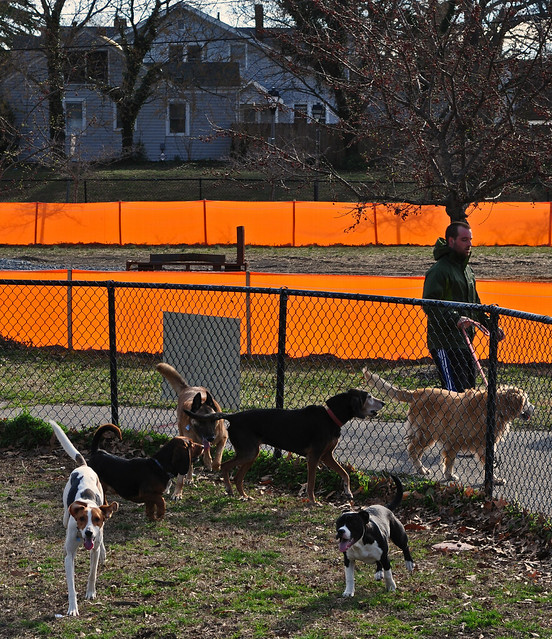
The dog park is adjacent to Haven Creek and our relatively new boat ramp and canoe/kayak launch making it a busy place during boating weather, though the skateboarders use it year-round.
One thing I am very excited about is the commencement of work on Haven Creek to restore the bank with a very environmentally friendly, living shoreline. Work just started this week.
Haven Creek empties into the Layfayette River where on Saturday a local crew was practicing on the frigid water.

This house faces the river and is one of my favorite landscapes. Confronted with regular flooding, a berm was built around the house, and in order to avoid creating a moat, heavy rain and seepage is pumped out to the street side. The whole thing is very well planted.
Right down the street could be our neighborhood's version of Gray Gardens. Funny they spent money on two new trees, but not any to keep the front porch from eventually falling down. This could be me.
Lady Anna is one of many mermaids that can be seen around Norfolk, but I prefer to call her Lefty.
There are some great trees in Colonial Place, including many Live Oaks (Quercus virginiana)...
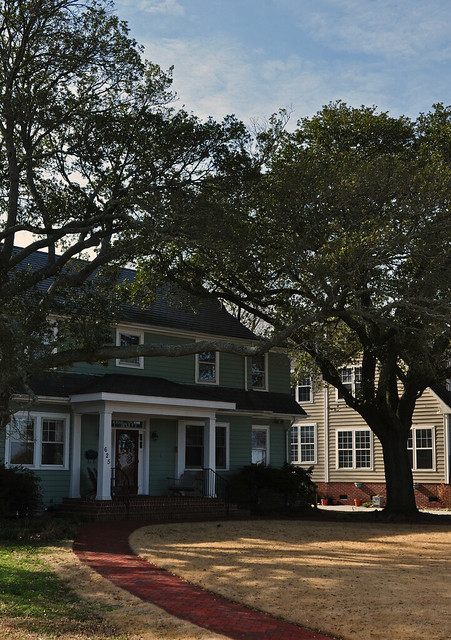
as well as this less leafy, but more massive Oak...
some substantial Magnolias (Magnolia grandiflora)...
and a few examples of zone denial.
On the western side of Colonial Place is Knitting Mill Creek, and all three waterways make our neighborhood a sometimes flood-prone peninsula.
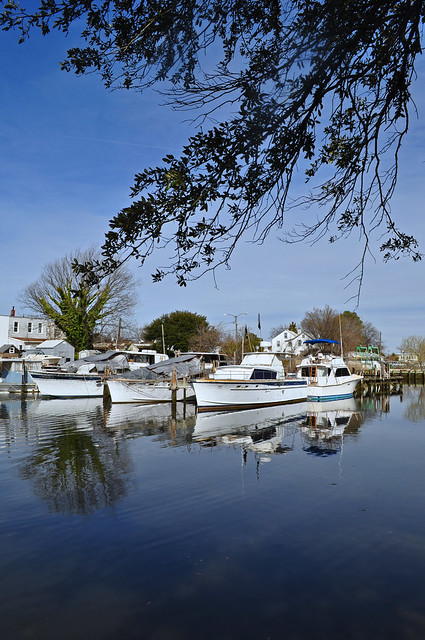
These geese have a nice view of the Tidewater Yacht Club, which is a place where people with boats can drink.
Near Knitting Mill Creek was our first house. This little 2 bedroom bungalow, was perfect for two soon-to-be newlyweds. We bought it in 1991 for 70K and lived in it four years before moving to a more child friendly house. At some point a flipper bought it, painted over its smart red and brown color scheme, divided the largest bedroom in two, put a half bath in the laundry room and resold it for 250K at the height of the boom. My only regret is giving up that low mortgage and planting a Red Tip (Photinia x fraseri) Golden Euonymus (Euonymus japonica 'Aureo-marginatus) combo.
The area's salty and usually breezy air was once thought to be good for tuberculosis, so a hospital was built here with lots of porches for its treatment, which is now an apartment building. I am not sure how effective the air was for TB, but I know living in this very walkable neighborhood makes me feel better.
Again, please participate and have fun!
(you can view all of my pictures from Winter Walk Off here)
